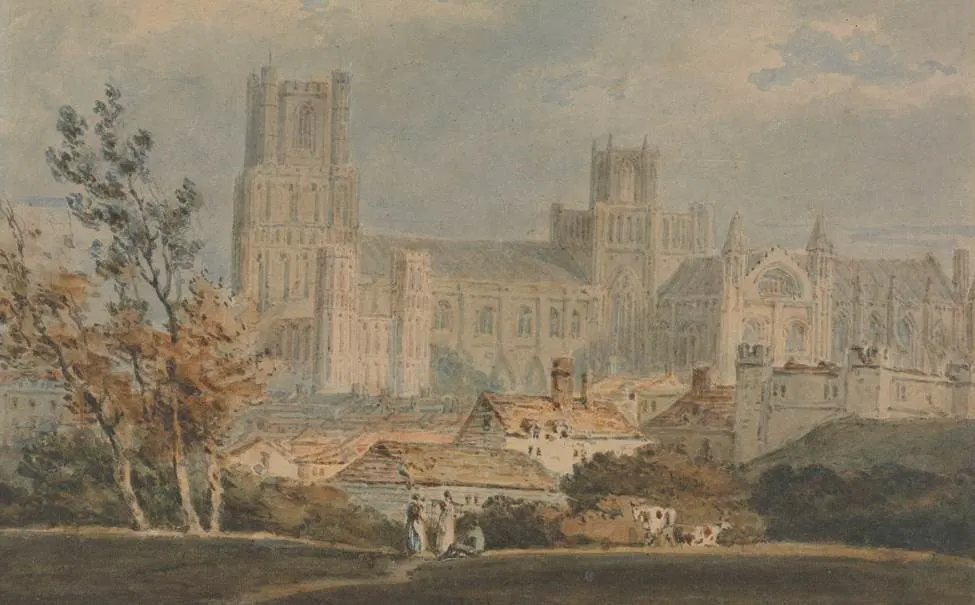An immense Gothic cathedral dominates the landscape in a cathedral city in Cambridgeshire, a county in the East of England.
The current building in Ely combines Gothic with the earlier Romanesque architecture and provides some unique architectural highlights.
Let’s take a closer look at some of the most interesting facts about Ely Cathedral, one of the most stunning churches in the world.
1. It’s located in the heart of this relatively small cathedral city
Ely Cathedral is by far the most prominent building in the cathedral city of Ely, Cambridgeshire. It’s located in the East Cambridgeshire of this county in the East of England.
The city has a population of just over 20,000 inhabitants and is located about 23 kilometers (14 miles north-northeast of Cambridge, the county town.
Ely was established on a remarkable natural feature called a Kimmeridge Clay island. This means that it sticks out of the Fenlands, a marshy area in this part of the country.
This naturally elevated position makes it stand out even more in the rural landscape. It’s why this enormous cathedral is locally referred to as “The Ship of the Fens.”

2. The original building in this location was a 7th-century abbey
The first religious building in this location dates back to Anglo-Saxon times in the 7th century. Ely Abbey was founded in the year 672 by Æthelthryth (Saint Etheldreda), a princess and daughter of East Anglian King Anna.
The family tradition of becoming abbesses was continued as several of her descendants became the Abbess of Ely.

Viking raids have resulted in the loss of all documentation of this period and it wasn’t until the year 970 that an abbey church was established here.
The shrine of Æthelthryth was once present in the church but it was destroyed during the Reformation in the year 1541. A marker inside the church points to the spot this was located.

3. The Normans started rebuilding the church in the 11th century
The church in Ely was refunded as a Benedictine Abbey in 970 and it became one of the most popular abbeys in England in the following decades.
This lasted until shortly after the Norman Conquest of England in 1066. They rebuilt just about every church in England and Ely Cathedral wasn’t different.
The cornerstone of the building we can admire today was laid in 1083. The Normans gradually demolished the former Benedictine abbey church and replaced it with a Romanesque design.
Most parts of this initial construction phase are now gone by you can still see the Romanesque architectural design in the transepts of the cathedral.
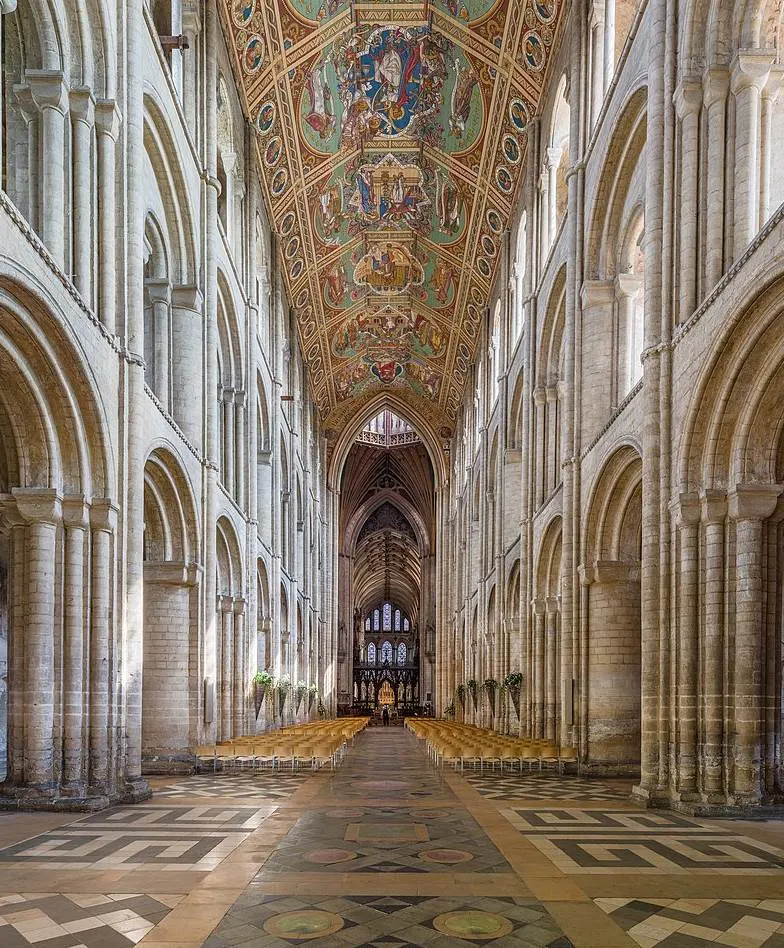
4. The west tower dominates the landscape and features a remarkable porch
The cathedral features a central octagonal tower and the West Tower. The latter is the tallest of the two as it stands 66 meters (217 feet) above the ground below.
This immense tower became a severe headache for the engineers who had to scramble to find a way to support this heavy structure.
The addition of the octagonal tower in the center was the most crucial phase in the history of the cathedral’s construction. Arches were integrated to support the structures in the early 15th century.
It didn’t matter because the northwest transept collapsed in the late 15th century, burying the Norman architecture that was replaced with a Gothic design.
The West Tower is adjoined by a so-called “Galilee Porch,” a structure that was initiated in the early 13th century and of which the exact purpose remains obscure. It is a great example of Early English Gothic architecture.

5. Ely Cathedral is one of the longest churches in England
Ely Cathedral is an enormous building with an incredibly long nave. Although it’s not the largest church in England, it still boasts some impressive dimensions:
- Length: 163.7 meters (537 feet)
- Nave Width: 24 meters (78 feet)
- Height West Tower: 66 meters (217 feet)
- Height Octagonal Tower: 52 meters (170 feet)
- Nave length: 75 meters (248 feet)
- Nave height: 32 meters (105 feet)
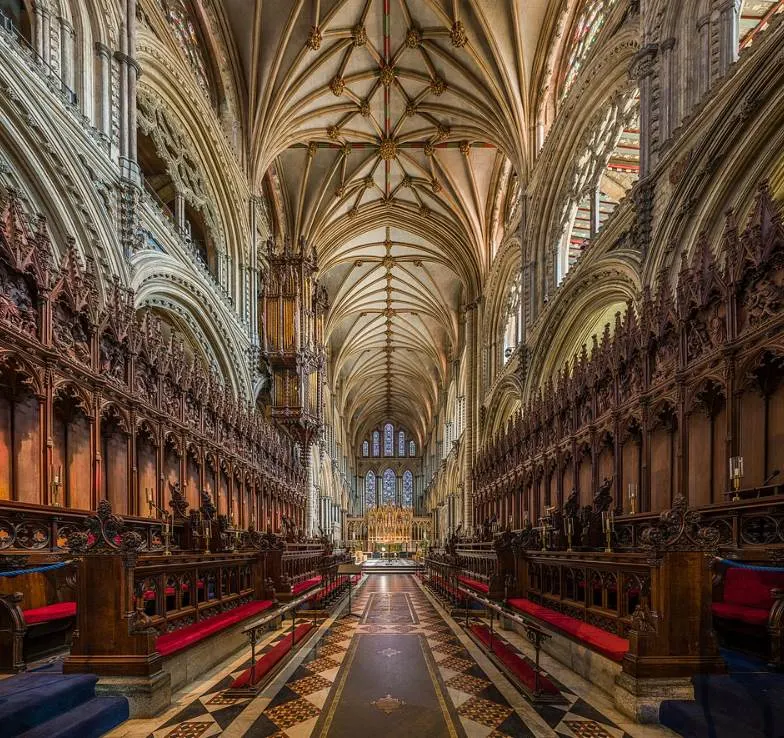
6. The Lady Chapel is a prime example of Engish Gothic architecture
One of the most fascinating features of Ely Cathedral is a free-standing structure that is linked to the northern aisle of the church b a covered walkway.
The construction of the Lady Chapel was initiated in the year 1321 and is one of the prime examples of the English Gothic style, also known as “Decorated Gothic.”
Pointed arches, rib vaults, and exuberant decorations are just some of the characteristics of this architectural style that flourished between the 12th and 17th centuries.
It took approximately 30 years to complete this rectangular building. It has a length of 30 meters (100 feet) and a width of 14 meters (46 feet).
The altar was decorated with a life-size sculpture of the Virgin Mary that was completed in the year 2000. This addition didn’t prove to be a great success among local churchgoers.
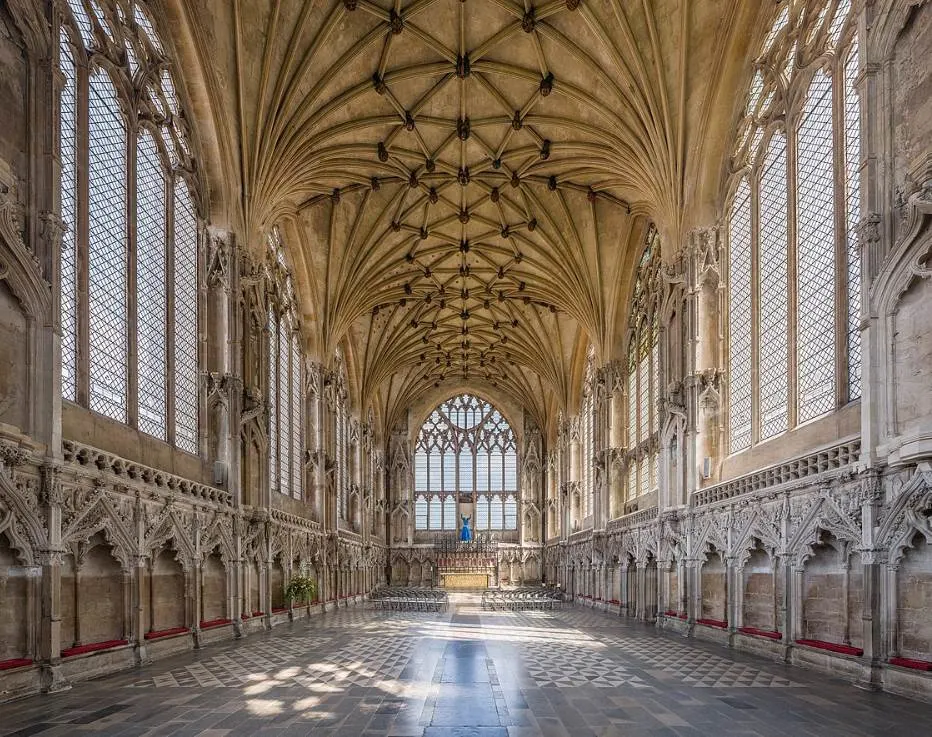
7. The most stunning feature of the cathedral was constructed after a disaster
About a year after the construction of the Lady Chapel began in 1321, a disaster happened.
The exact details remain unclear but it’s probably that the Norman central tower collapsed because foundations for the Lady Chapel were being dug.
Because of this catastrophe, the stunning central octagonal tower, also known as the “Lantern Tower” was constructed.

8. The cathedral is home to a popular Stained Glass Museum
Most of the stained glass windows that you can see inside the church date back to a renovation phase that was conducted in the 19th century.
Just about all of the medieval colored windows were destroyed during the Reformation in the 16th century.
The rediscovery of techniques to produce stained glass windows in the 19th century is the base of the stained glass window museum that was established in 1972.
The museum first opened its doors in 1979 and is located in the south triforium of Ely Cathedral. It houses a remarkable collection of stained glass windows from England and other parts of Europe.
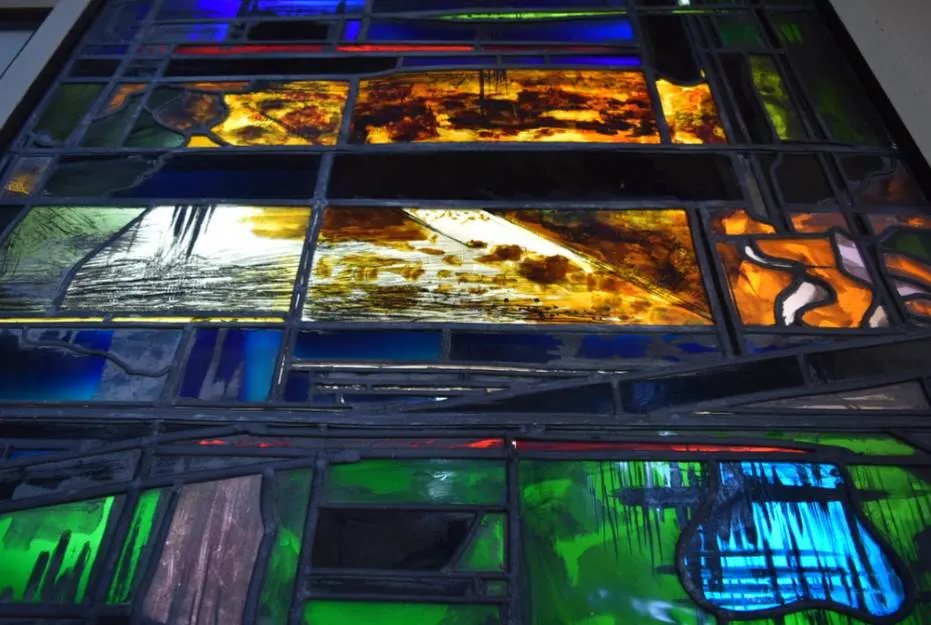
9. It takes 288 steps to reach the top of the West Tower
Ely Cathedral is one of the most popular tourist attractions in the region and is visited by over a quarter-million people every year.
Apart from admiring the amazing Romanesque ad Gothic architecture of the building and visiting the stained glass window museum, you can also climb to the top of the West Tower.
It takes 288 steps to reach the top but the reward is an amazing view of the octagonal tower and the surrounding landscape.

10. A young J.M.W. Turner painted the cathedral in the late 18th century
The cathedral is a fascinating site in the Engish landscape, and this didn’t go unnoticed by some of the most famous Engish artists in history.
J.M.W. Turner became one of the most famous artists of the 19th century and painted the cathedral in Ely at the start of his career in 1796.
The painting “View of Ely Cathedral” is one of many churches that he painted in his career, but also one of the first. It’s part of the collection of the Yale Center for British Art at Yale University in New Haven, Connecticut.
